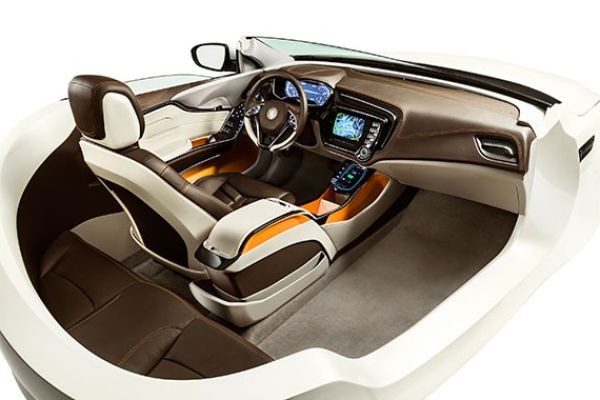The global automotive trim market is experiencing steady growth, supported by evolving consumer preferences, technological advancements, and the rising adoption of electric vehicles (EVs). Automotive trim, encompassing both interior and exterior components, plays a vital role in enhancing a vehicle’s functionality, safety, comfort, and aesthetics. With increasing demand for luxury finishes, lightweight materials, and sustainable solutions, the industry is witnessing a major transformation that positions it as an integral part of the automotive value chain.
Market Overview
Automotive trim includes a wide range of components such as dashboard panels, seat covers, door trims, carpeting, exterior moldings, and roof lining. These elements not only improve the overall appeal but also contribute to performance by reducing weight and noise. The market outlook is shaped by rising consumer expectations for stylish and durable interiors, the need for energy efficiency in vehicles, and stricter regulatory standards regarding sustainability and emissions.
Growing demand for EVs is another significant catalyst. Electric and hybrid vehicles often integrate innovative trim materials to optimize cabin comfort, reduce weight, and enhance the premium driving experience, further expanding the scope of the market.
Key Market Drivers
-
Shift Toward Lightweight Materials
To improve fuel efficiency and reduce emissions, manufacturers are increasingly focusing on lightweight trim solutions. Materials such as carbon fiber-reinforced plastics, aluminum composites, and thermoplastics are gaining traction due to their strength-to-weight ratio and design flexibility. -
Consumer Demand for Premium Interiors
Rising disposable incomes and evolving lifestyles are driving demand for luxurious and personalized interiors. High-quality leather, advanced textiles, and customizable trim features are increasingly used to create sophisticated vehicle environments, especially in SUVs and premium sedans. -
Sustainability and Eco-Friendly Solutions
Environmental concerns are pushing the industry toward adopting bio-based and recycled materials. Sustainable trims not only reduce environmental impact but also appeal to eco-conscious consumers, giving automakers a competitive edge. -
Technological Advancements in Manufacturing
Automation, 3D printing, and advanced surface treatment technologies are enabling manufacturers to produce more intricate, durable, and cost-efficient trim designs. These innovations help meet both OEM and aftermarket demands effectively. -
Growth in Electric Vehicles
EV manufacturers prioritize lightweight, durable, and noise-reducing trims to maximize battery performance and enhance user experience. As EV sales surge worldwide, this segment is expected to contribute significantly to market expansion.
Market Segmentation Insights
-
By Material Type: Plastics, leather, fabrics, carbon fiber composites, and metals. Plastics dominate due to cost-effectiveness, while leather and high-quality fabrics are prevalent in luxury segments.
-
By Application: Interior trims (dashboards, seats, doors, carpets) hold a larger share than exterior trims (bumpers, grills, and moldings) due to rising consumer interest in comfort and design.
-
By Vehicle Type: Passenger cars lead demand, followed by commercial vehicles, with electric cars emerging as a fast-growing subsegment.
-
By Sales Channel: OEMs dominate, but the aftermarket is expanding rapidly due to growing customization trends and replacement needs.
Regional Outlook
-
North America: Strong demand for SUVs and luxury vehicles is driving growth, supported by technological innovations in materials.
-
Europe: Stringent regulations on sustainability and emissions are fostering the adoption of eco-friendly trim materials.
-
Asia-Pacific: The fastest-growing region due to high vehicle production in China, India, and Japan, combined with rising middle-class demand for premium features.
-
Latin America & Middle East: Steady growth with increasing urbanization, rising disposable incomes, and demand for both affordable and premium vehicles.
Emerging Trends
-
Integration of smart trims with embedded sensors for enhanced safety and infotainment.
-
Use of antimicrobial materials to address growing health and hygiene concerns post-pandemic.
-
Expansion of modular interior concepts to enable flexible seating and storage configurations.
-
Growing preference for matte finishes and natural textures in place of high-gloss designs.
Competitive Landscape
The automotive trim industry is highly competitive, with global and regional players investing in product innovation and strategic partnerships. Key strategies include collaborations with automakers, mergers and acquisitions, and expansion into emerging markets. Manufacturers are focusing on cost reduction while ensuring quality and design differentiation.
Prominent players are also prioritizing sustainable sourcing and recycling initiatives to align with global environmental goals and consumer expectations. This shift not only helps in compliance but also builds brand reputation and customer loyalty.
Future Outlook
The future of the automotive trim market will be shaped by sustainability, electrification, and customization. Lightweight and eco-friendly materials will dominate, while digital integration of trim components—such as touch-sensitive controls and LED-embedded surfaces—will create new user experiences.
As mobility trends evolve, including shared mobility and autonomous vehicles, trim design will focus on versatility, comfort, and durability. The aftermarket sector will continue to thrive as consumers seek personalization and upgrades beyond standard OEM offerings.
Conclusion
The automotive trim market stands at the intersection of innovation, sustainability, and consumer demand for premium comfort. With the rise of electric vehicles, technological advancements, and material innovations, the industry is poised for significant growth. Companies that invest in eco-friendly solutions, smart trims, and advanced design capabilities will be best positioned to capture opportunities in this evolving landscape.

